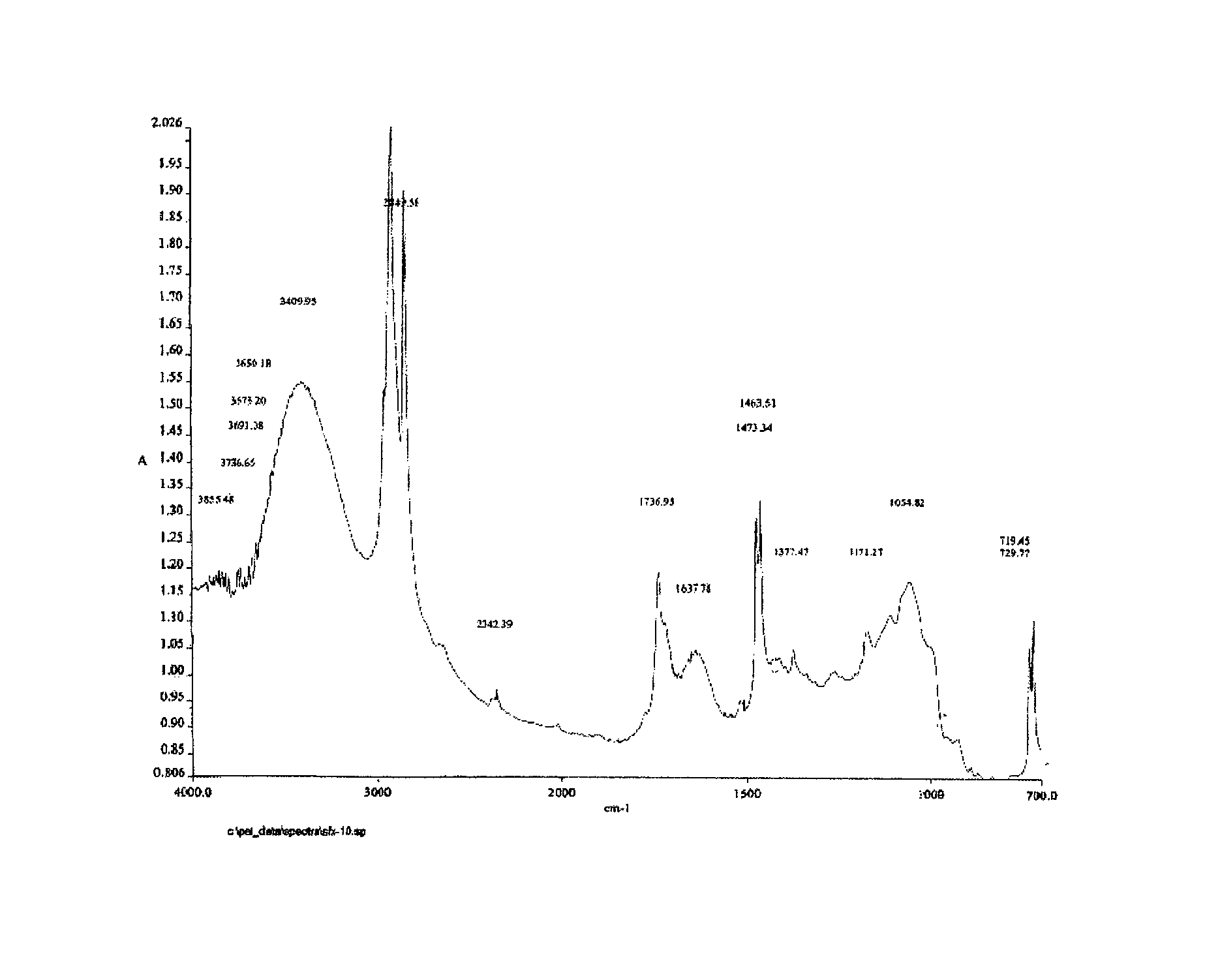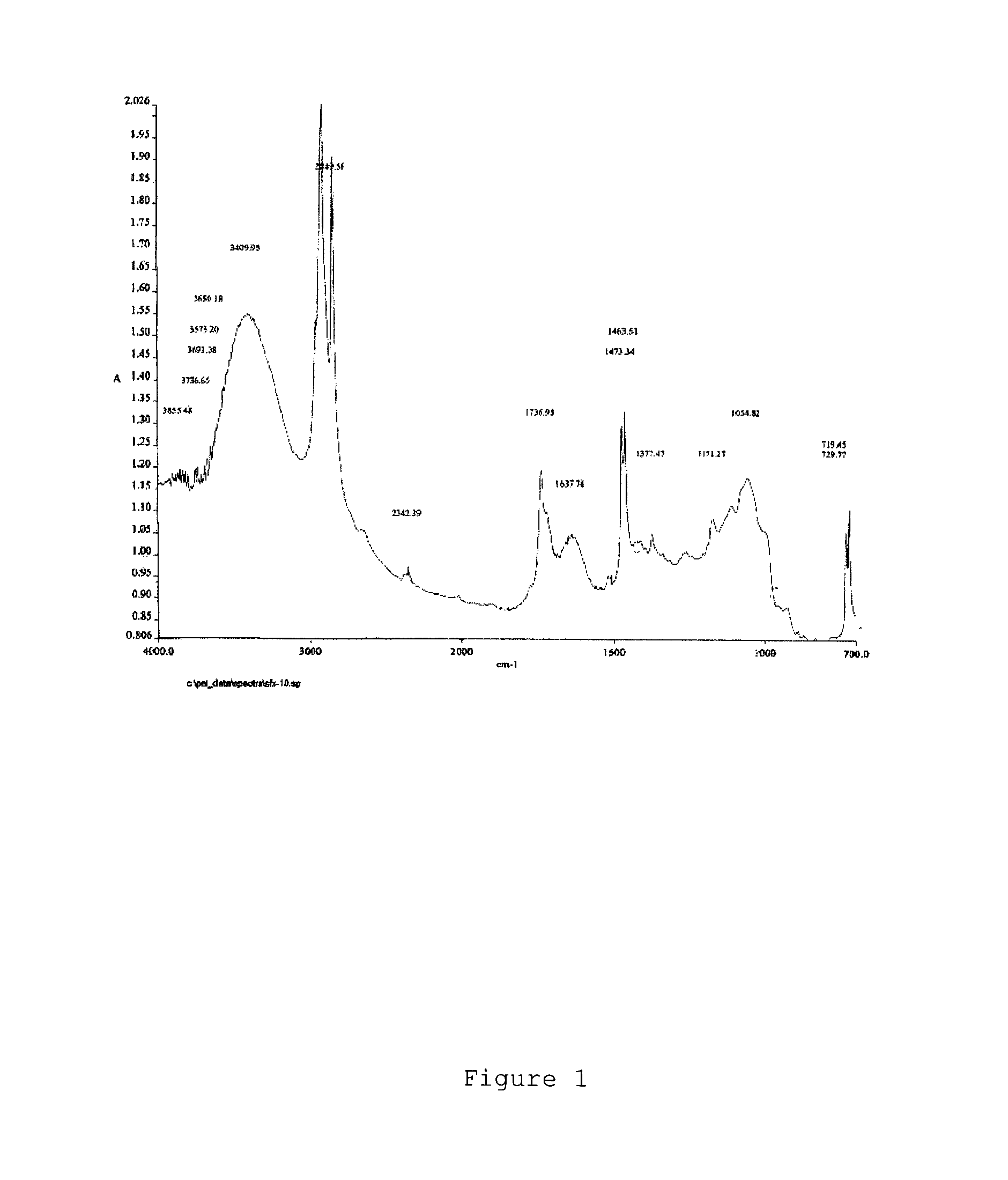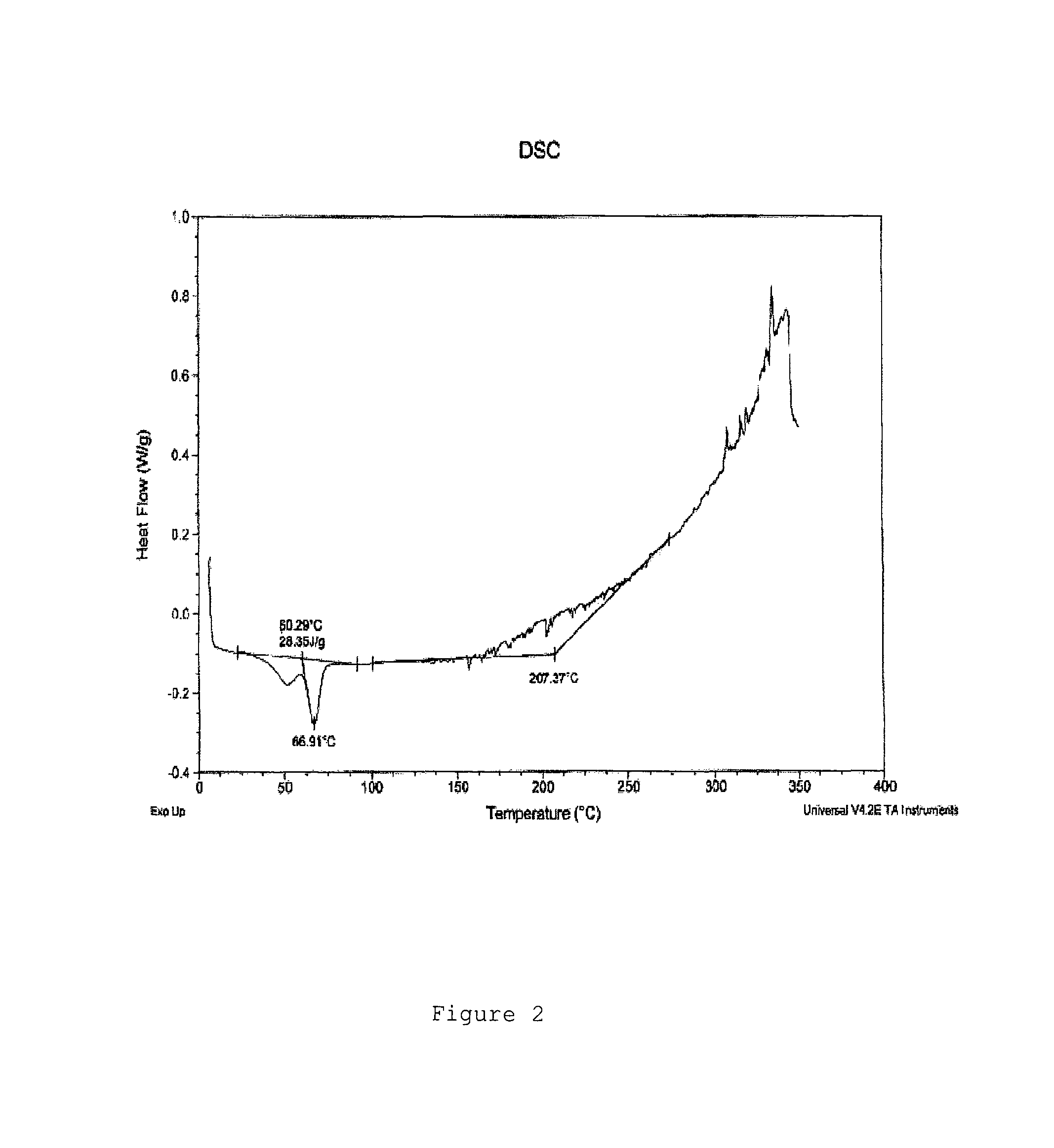Resin extract, extraction process and uses thereof
a technology of resin extract and extraction process, applied in the field of resins, can solve the problems of limited industry adoption of replacement resins, high cost of non-formaldehyde based resins, and impeded development of new adhesives and resins for composite and engineered wood products
- Summary
- Abstract
- Description
- Claims
- Application Information
AI Technical Summary
Benefits of technology
Problems solved by technology
Method used
Image
Examples
example 1
Caustic Extraction Method
[0125]3 kg of Spinifex fibre was loaded into a mesh box and immersed in 230 liters of water in a steam jacketed digester. The pH of the water was adjusted to a pH 11 using sodium hydroxide. The mixture was then boiled at 100° C. for 4 hours, mesh removed, and a first distillate (liquor) collected having a pH of 6.2. A replicate digestion was then conducted, with the addition of nitrogen infusion to prevent possible oxidation reactions, and a second distillate (liquor) collected having a pH of 8.5. The first and second distillates were then combined and boiled down to provide a concentrate containing 32.5% by weight resin. The pH of the concentrate was measured to be 11.5. Hydrochloric acid (6.0N) was titrated into the concentrate until an emulsification occurred, namely where the sediment solids became a suspension in the liquid concentrate. The pH of the emulsified concentrate was measured to have a pH of 4.5. No indication of exothermic temperature gain wa...
example 2
Extraction Method Using Water
[0126]Spinifex fibre was added to a steam jacketed digester encased in a mesh box and immersed in water at a ratio of 4:1, water weight to fibre weight. The mixture was cooked for 1 hour at 100° C. to obtain a first distillate. The first distillate was evacuated and collected. The cooked fibre was also collected. Another digestion was then immediately conducted using a 3:1 ratio, water weight to fibre weight to obtain a second distillate. The second distillate was evacuated and collected. Samples of the first and second distillates taken at 30 minutes of cook time yielded distillates having a pH of 6.4. The resin % by weight in both the first and second distillates was about 3%. The first and second distillates were combined and evaporated to give a concentrate having a pH of 5.9.
example 3
Extraction Method Using Methanol
[0127]7.5 grams of Spinifex fibre was placed in a Soxhlet extractor with 100 ml of methanol. The mixture was heated to 80° C. and allowed to reflux for two hours. Additional Spinifex fibre was added at each two hour interval until a total of 30 grams had been introduced into the methanol solution. A distillate was then collected comprising about 1.5 grams of a viscous resin extract.
[0128]Samples of the resin were then prepared for FTIR analysis. All resin samples provided similar IR absorption peaks, which were substantially the same as that shown for resins obtained from Examples 4 to 6 below (see Table 1 below).
[0129]
TABLE 1Absorption peaks identified from resin extractsFTIR Frequency InterpretationAbsorp-Specific TypetionAppearanceBondType of Bondof BondPeakcm−1O—Halcohols,low conc.3650broadphenolsN—Hprimary aminesany3410strongN—Hammonium ionsany2850multiplebroad peaksC═Ocarboxylicesters &1737influenced byacids / derivateslactonesconjugationring size...
PUM
| Property | Measurement | Unit |
|---|---|---|
| Temperature | aaaaa | aaaaa |
| Temperature | aaaaa | aaaaa |
| Weight | aaaaa | aaaaa |
Abstract
Description
Claims
Application Information
 Login to View More
Login to View More - Generate Ideas
- Intellectual Property
- Life Sciences
- Materials
- Tech Scout
- Unparalleled Data Quality
- Higher Quality Content
- 60% Fewer Hallucinations
Browse by: Latest US Patents, China's latest patents, Technical Efficacy Thesaurus, Application Domain, Technology Topic, Popular Technical Reports.
© 2025 PatSnap. All rights reserved.Legal|Privacy policy|Modern Slavery Act Transparency Statement|Sitemap|About US| Contact US: help@patsnap.com



